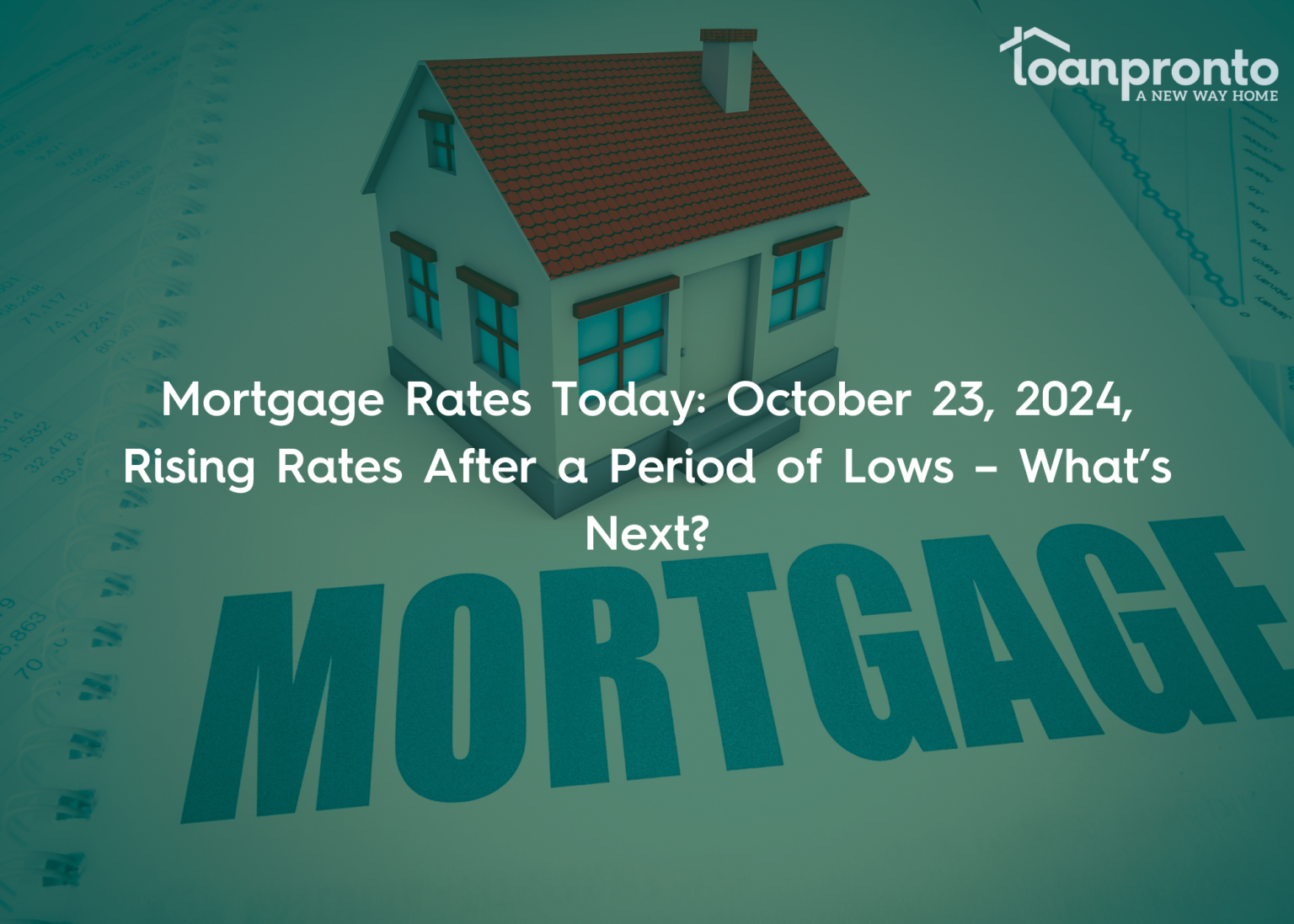A month ago, we saw mortgage rates sitting near their lowest levels in recent memory, offering an excellent opportunity for homebuyers and homeowners to lock in favorable rates. However, since then, the tide has turned, and mortgage rates have begun to rise again.
What’s Happened Since the Fed Rate Cut?
Following the Federal Reserve’s rate cut a month ago, many expected mortgage rates to remain steady or even decline again. While the Fed rate cut created a favorable environment for lower rates, mortgage rates have more to do with long-term bond yields and the broader economic outlook. Over the past few weeks, we’ve seen new economic data suggesting stronger growth and persistent inflationary pressures. This has led to an increase in bond yields, pushing mortgage rates upward.
Why Are Mortgage Rates Going Up?
The rise in mortgage rates this past month is largely driven by market forces reacting to economic data. As inflation remains a concern and the economy continues to grow, investors demand higher returns on bonds, which leads to higher mortgage rates. Additionally, while the Fed’s rate cuts make short-term borrowing cheaper, long-term rates, like those on mortgages, are more influenced by market sentiment about inflation and future economic growth. The recent reports of strong consumer spending and employment numbers have spurred concerns that inflation may stick around longer than expected, prompting the market to adjust accordingly. As a result, mortgage rates have risen, reversing the trend we saw earlier this year.
Impact on Homebuyers and Homeowners
For prospective homebuyers, these rising rates in the past month may affect their purchasing power. As rates increase, the cost of borrowing goes up, meaning higher monthly payments. This can reduce affordability, making it a bit more challenging to find homes within your budget. Homeowners looking to refinance may also find that the window of opportunity for securing the best rates is closing. While rates are still historically low compared to pre-pandemic levels, they are trending upward again, which could make refinancing less attractive in the coming months.
Looking Ahead: What to Expect Next
As we move into the coming weeks, the focus will be on any new economic data that could further influence the direction of mortgage rates. Key reports on inflation, employment, and consumer spending will be crucial in determining whether this upward trend in rates continues. If inflation remains high and the economy continues to grow, we could see rates increase further. On the other hand, if there are signs that inflation is cooling or if economic growth slows, there may be some relief for mortgage rates, potentially stabilizing or even decreasing again.
What Should You Do Now?
If you’re in the market to buy a home or refinance your existing mortgage, it’s important to stay informed and keep an eye on the rate trends. While rates are still lower than they’ve been historically, the recent upward trend could continue, making it wise to act sooner rather than later. For homebuyers, locking in a rate now might save you from higher monthly payments down the line. For homeowners, if you’ve been considering refinancing, it may be a good time to lock in a rate before they climb further.
Final Thoughts
The recent rise in mortgage rates serves as a reminder that the market can shift quickly. While rates are still favorable, they are no longer at the lows we saw just a month ago. Whether you’re buying or refinancing, now is the time to evaluate your options and consider locking in a rate before they rise again. As always, stay tuned to market developments and be ready to act if the conditions change.
| Product | Rate | Last Week | Change |
| 30-year fixed | 5.99% | 5.488% | ⇧ 0.502 |
| 15-year fixed | 5.24% | 4.624% | ⇧ 0.616 |
| 30-year FHA | 5.624% | 5.041% | ⇧ 0.583 |
| 30-year VA | 5.624% | 4.99% | ⇧ 0.634 |
DISCLAIMER: ALL LOANS ARE SUBJECT TO CREDIT APPROVAL. INTEREST RATES ARE SUBJECT TO CHANGE DAILY AND WITHOUT NOTICE. CURRENT INTEREST RATES SHOWN ARE INDICATIVE OF MARKET CONDITIONS AND INDIVIDUAL QUALIFICATIONS AND WILL VARY UPON YOUR LOCK-IN PERIOD, LOAN TYPE, CREDIT SCORE, LOAN TO VALUE, PURPOSE, AND LENDING SOURCE.
DISCLAIMER: FOR NEW JERSEY PURPOSES, WE ARE NOT A LENDER AND CANNOT GUARANTEE THESE INTEREST RATES.
30-year fixed-rate mortgages
Presently, the 30-year fixed-rate mortgage sits at 5.99%, reflecting a rise of 50.2 basis points from the preceding week. Despite its interest rate being higher than that of the 15-year mortgage, the 30-year option is favored by many buyers for its advantage of providing more budget-friendly monthly payments.
15-year fixed-rate mortgages
The current interest rate for a 15-year fixed-rate mortgage is 5.24%, showcasing an increase of 61.6 basis points from the week prior. Choosing a 15-year mortgage enables borrowers to pay back their loan repayment quicker compared to the 30-year option. While this leads to increased monthly payments, it substantially diminishes the total interest paid over the loan’s duration.
Use our free mortgage and amortization calculators to calculate your monthly payment, including insurance, taxes, and interest.
No SSN required. Zero impact to credit. Your Information is never sold.
